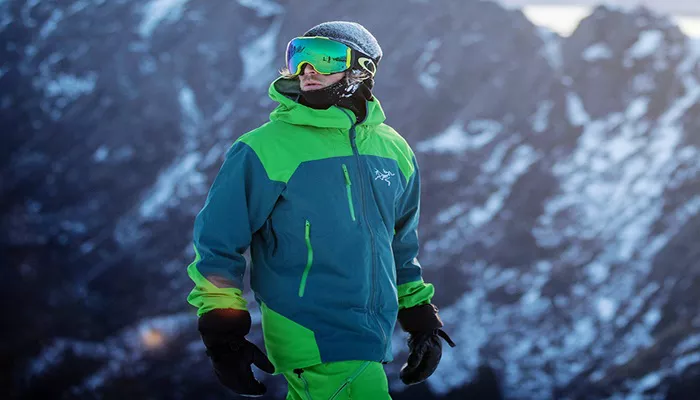Proper clothing is essential for an enjoyable skiing experience. Men need to dress smartly, layering for warmth, flexibility, and protection against the elements. Knowing what to wear impacts not only comfort but also performance and safety. This guide explains everything men should wear while skiing, covering layers, skiing gear, and expert tips to conquer the slopes confidently.
Why Layering is Crucial for Skiing
Managing Body Temperature
Layering helps regulate body temperature. Skiing involves intense activity followed by periods of rest. Multiple layers allow adjustments to match changing conditions.
Moisture Control
Wicking layers pull sweat away from the skin. Staying dry prevents rapid heat loss and keeps you comfortable throughout the day.
Weather Protection
Outer layers shield against wind, snow, and rain. A reliable shell layer is critical in harsh mountain environments.
Essential Skiing Base Layer for Men
Material Matters
Choose moisture-wicking fabrics. Merino wool and synthetic blends outperform cotton, which retains moisture and chills the body.
Fit and Function
Base layers should be snug but not restrictive. They must allow freedom of movement while maintaining close contact with the skin for efficient moisture management.
Mid Layer: Insulation for Skiing Men
Purpose of Mid Layers
Mid layers provide insulation. They trap heat while allowing breathability to prevent overheating.
Best Mid Layer Options
Popular choices include fleece jackets, lightweight down jackets, and insulated vests. Fleece is breathable and budget-friendly. Down offers maximum warmth with minimal weight.
Outer Layer: Protective Ski Jackets and Pants
Ski Jackets
Look for waterproof and breathable jackets. Features like adjustable hoods, pit zips, powder skirts, and taped seams enhance functionality.
Ski Pants
Waterproof ski pants with reinforced cuffs and ventilation zips keep you dry and comfortable. Some models offer insulation; others are shells, ideal for layering versatility.
Additional Essential Clothing Items for Skiing Men
Gloves or Mittens
Waterproof, insulated gloves are a must. Mittens provide extra warmth, while gloves allow more dexterity. Some skiers prefer glove liners for added insulation.
Helmet
Safety first. Always wear a certified ski helmet. It protects against impacts and provides thermal insulation.
Goggles
Ski goggles shield eyes from UV rays, wind, and snow. Choose lenses based on light conditions — darker for sunny days, lighter or yellow-tinted for cloudy conditions.
Neck Gaiter or Balaclava
Protect your neck and lower face with a gaiter or balaclava. In extreme cold, full coverage minimizes heat loss and windburn.
Wool Socks
High-quality ski socks made of wool or synthetic fibers prevent blisters and keep feet warm. Avoid cotton socks which hold moisture.
Choosing the Right Skiing Gear
Beyond clothing, the right skiing gear enhances performance and comfort. Boots should fit snugly without pressure points. Skis and bindings must match your ability and skiing style. Poles should be correctly sized for balance and control.
Recommended Ski Brands for Men
Jackets and Pants
Brands like Arc’teryx, Patagonia, and The North Face offer premium jackets and pants known for durability, weatherproofing, and comfort.
Base and Mid Layers
Smartwool, Icebreaker, and Helly Hansen provide excellent base layers. For mid layers, consider Patagonia’s fleece or lightweight down offerings.
Accessories
Giro and Smith specialize in helmets and goggles. Hestra gloves are a top choice among seasoned skiers for their quality and warmth.
Common Mistakes Men Make When Dressing for Skiing
Wearing Cotton Layers
Cotton holds moisture and leads to rapid chilling. Always opt for technical fabrics designed for moisture management and warmth.
Overdressing
Too many heavy layers cause overheating and excessive sweating. Use lightweight, breathable materials and layer strategically.
Ignoring Proper Fit
Ill-fitting gear restricts movement or leaves gaps for snow and wind to penetrate. Make sure everything fits comfortably and allows full range of motion.
Preparing for Different Weather Conditions
Sunny Days
Use lighter layers, sunblock, and tinted goggles. UV exposure is intense at higher altitudes even in winter.
Snowy or Windy Days
Layer up with insulated jackets and windproof shells. Visibility can be reduced, making good goggles essential.
Frigid Temperatures
Choose heavier mid layers, thermal base layers, and balaclavas. Make sure extremities (hands, feet, head) are properly insulated.
How to Adjust Clothing During Skiing
Ventilation Zips
Use jacket and pant ventilation zips during intense activity to cool down without removing layers.
Layer Removal
If overheating, remove a mid layer. Always maintain a protective outer shell to guard against wind and snow.
Adding Layers
During rest periods or in colder lifts, add a lightweight insulated layer to stay warm.
Après-Ski Clothing Tips for Men
Casual Comfort
After skiing, switch to warm, casual clothing like jeans, fleece jackets, and après boots designed for snowy streets.
Layer Down
Let your ski gear dry and change into moisture-wicking casual wear. Avoid remaining in damp base layers to prevent getting cold.
Conclusion
Knowing what to wear skiing helps men stay comfortable, safe, and stylish on the mountain. Focus on strategic layering, moisture management, and weather protection. Choose reliable skiing gear that fits well and adapts to varying conditions.
Whether it’s your first time on the slopes or you’re a seasoned skier, proper preparation ensures an unforgettable, worry-free ski adventure.

